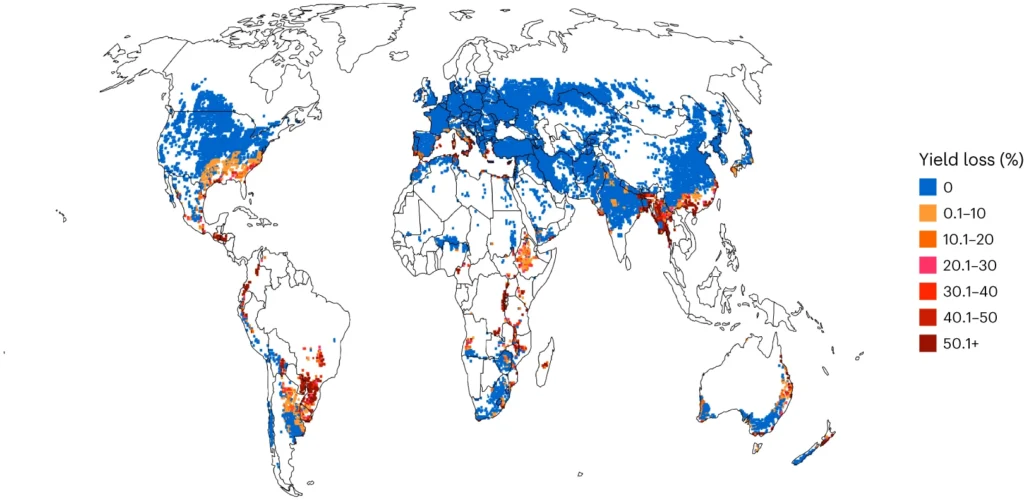Table of Contents


Introduction
Globally, wheat is cultivated over 222 million hectares of land annually and produces 779 million MT of wheat grains every year. Since its domestication around 10,000 years ago, wheat has played a crucial role in global food security. Over 120 countries distributed across Europe, Africa, the Americas, Asia and Oceania cultivate wheat.
Climate change is set to gradually shift wheat mega-environments, including increased cultivation prospects in the northern and southern latitudes, while increased stress may lead to reduced production in sub-tropical environments (including heat, drought and biotic stresses. Over time new pests and diseases or new races of existing diseases, have emerged with far-reaching consequences, including rusts and blast.
What is the new threat to wheat production?
As per a recent study, it was found that Wheat blast disease caused by the fungal pathogen Magnaporthe oryzae pathotype Triticum has become a new threat for its production in warm and humid areas. Due to this disease globally, its production can decrease by up to 13% (69 million mt) by 2050.
The study was carried out under the leadership of International Maize and Wheat Improvement Center, Texcoco, Mexico-based scientist Diego N. L. Pequeno in collaboration with Technical University Munich and published in Nature Climate Change journal in February 2024.
The study also developed a global map for potential yield loss due to blast disease from 2040 to 2070


Prediction for Yield reduction due to disease
The blast disease was first reported in Brazil in 1965 followed by Bangladesh in 2016 and Zambia in 2018. The study was carried out with the help of simulation models and it was estimated that due to rising temperatures and high RH areas will have more yield loss than other regions. These areas are mainly South America, African & south Asian countries that would be under high threat zone which may rise upto 75% of yield loss.
Researchers find that this disease can also spread in Brazil, Argentina, Bolivia and Paraguay (in South America) and Uruguay, Japan, Italy, Spain, New Zealand, Bangladesh, Zambia, Ethiopia, Kenya and Congo. It was predicted that under future climates, some parts of India may become less susceptible to blast infection if dry seasonal conditions prevail with more frequent extreme high temperatures (above 35 °C) during the latter part of the growing season.
By contrast, the risks of blast in Europe and East Asia are low, with close to zero simulated yield loss in their main wheat production areas, except for warm humid areas in southeast China.
How to identify blast disease
You may also like our other articles:

Thanks I have just been looking for information about this subject for a long time and yours is the best Ive discovered till now However what in regards to the bottom line Are you certain in regards to the supply